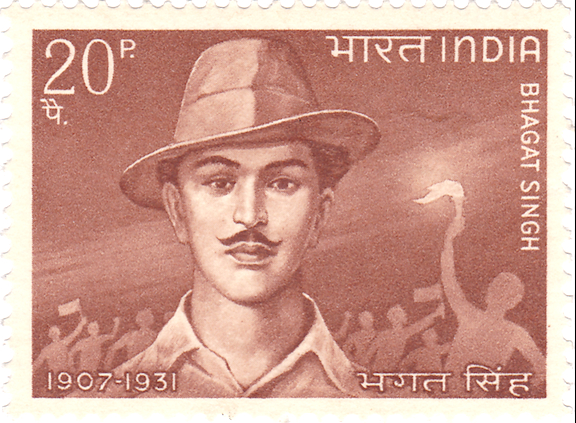On this date in 1907, Bhagat Singh, a revolutionary hero of the Indian independence movement, was born in Lyallpur (in current-day Pakistan). Although he’s revered almost universally in India, few of his admirers know that he was an avowed atheist and Marxist.
Singh was part of a family of freedom fighters and quickly acquired a radical consciousness. In 1928 he was convicted of conspiring to kill a British police officer in revenge for the beating death of an elderly independence stalwart, Lala Lajpat Rai. Singh escaped from the assassination scene only to reappear at the Punjab state Assembly building some months later, setting off bombs and shouting slogans.
Singh was willingly arrested with his comrade Batukeshwar Dutt. He was hanged by the British authorities along with two other co-conspirators on March 23, 1931, rendering him “immortal” in the eyes of his fellow Indians. He is remembered all across India and glorified in movies, TV shows, plays and songs. Singh was of Sikh background but became disillusioned with religion by his early youth. A turning point was religious unrest in his hometown of Lahore. He wrote articles analyzing the deleterious role that religion was playing in preventing Indians from coming together to oust the British.
His seminal essay on the issue was composed in prison in response to friends who thought his unbelief stemmed from vanity. In “Why I Am an Atheist,” written while he was facing execution, Singh patiently explained why he stopped believing in God and challenged every major Indian religion: “By the end of 1926 I had been convinced as to the baselessness of the theory of existence of an almighty supreme being who created, guided and controlled the universe. I had given out this disbelief of mine, I began discussion on the subjects with my friends. I had become a pronounced atheist.”
Singh offers a paradox in present-day India, where a man is venerated but his freethought and radicalism are conveniently ignored. A postage stamp with his image was issued in 1968. An 18-foot statue of him stands tall in the Indian Parliament, and his cremation site has been designated as the National Martyrs Memorial, but there are few takers for his ideas.
Singh’s proud embrace of atheism, even in the face of imminent death, presents a possible way out of the religious nationalism that has been bedeviling the country. D. 1931.


